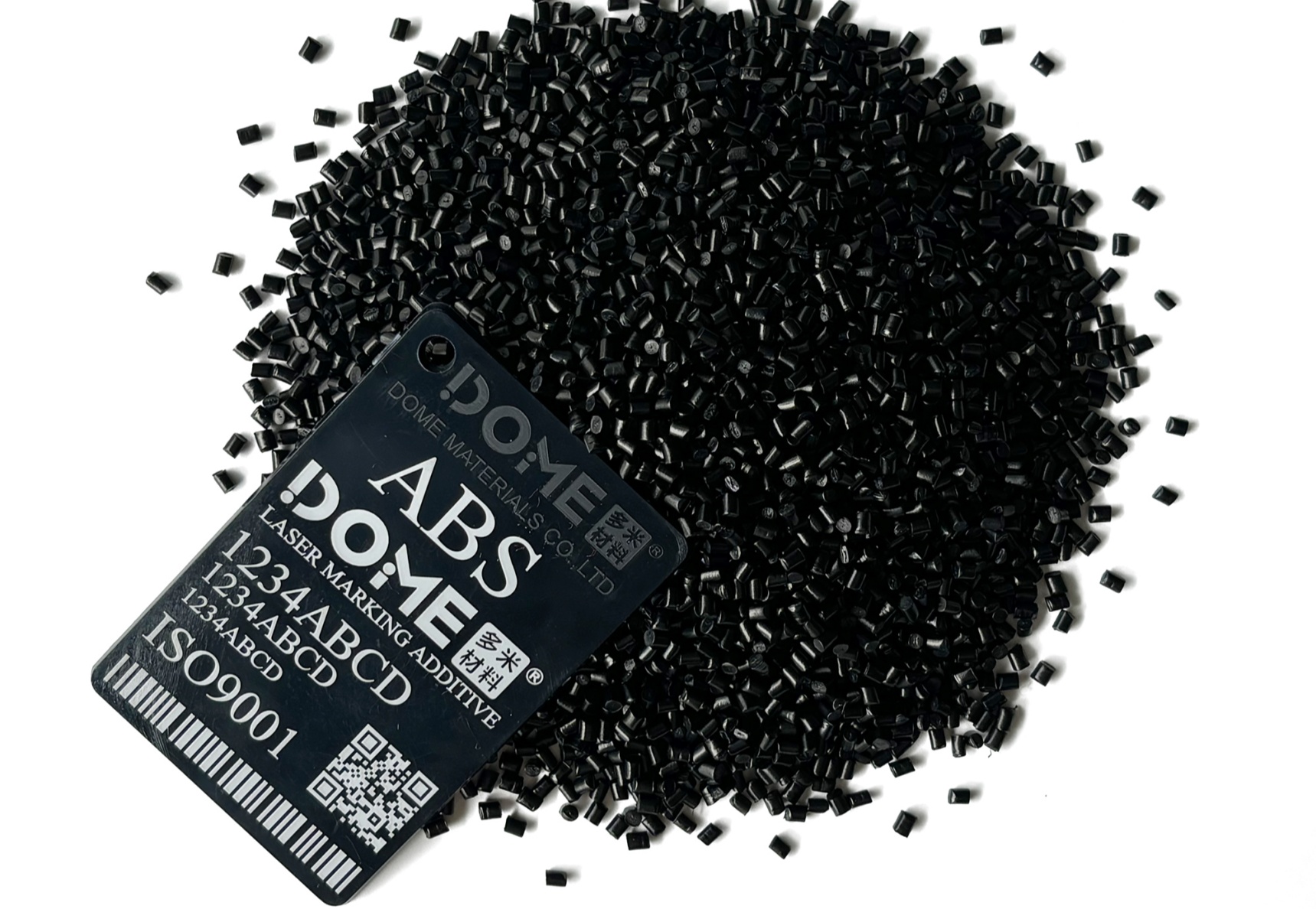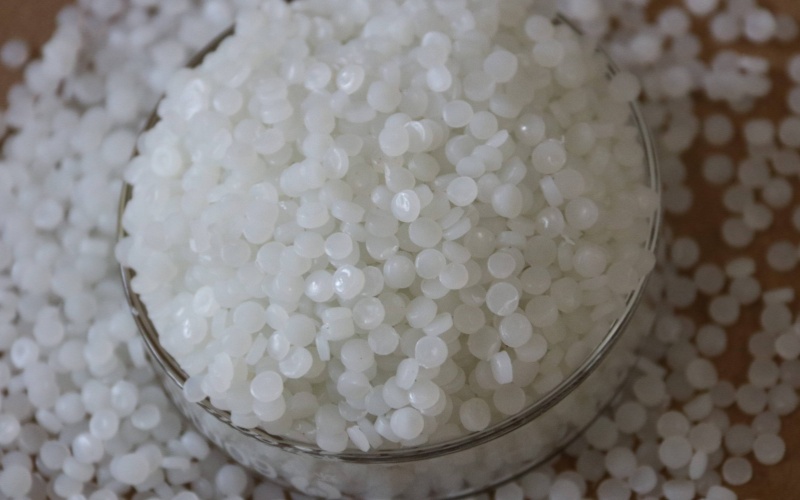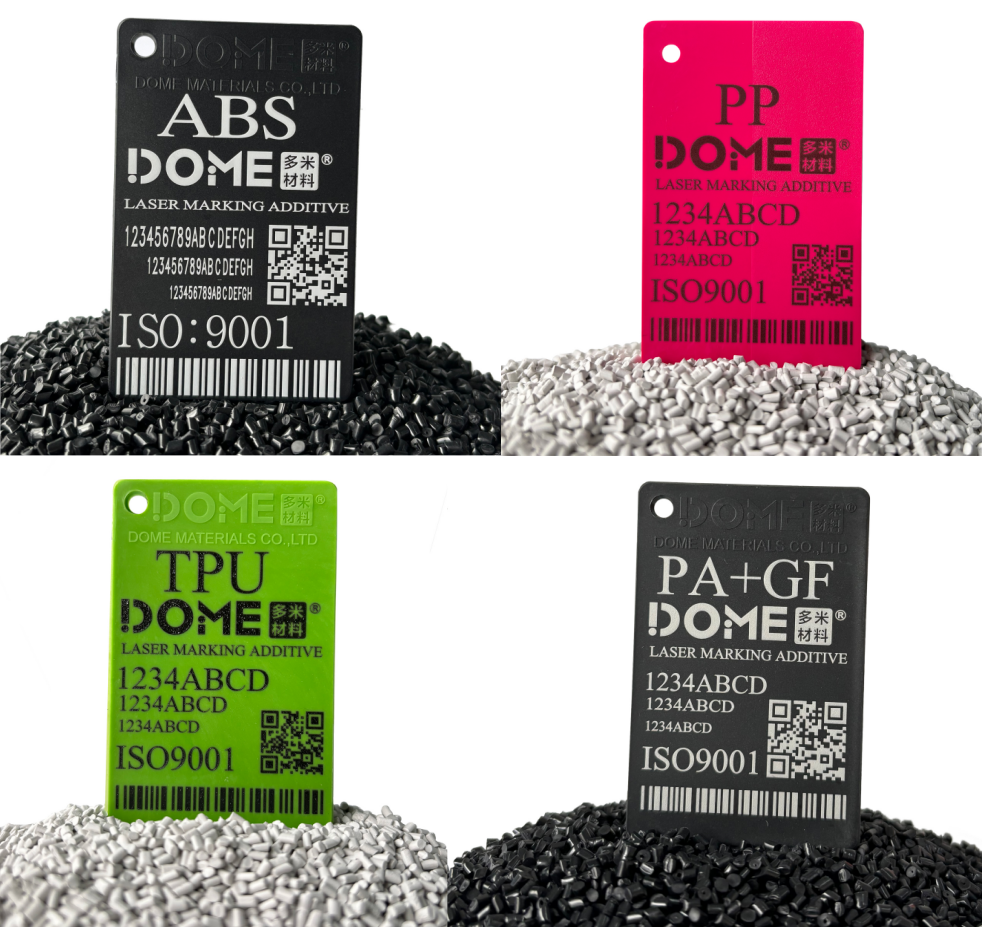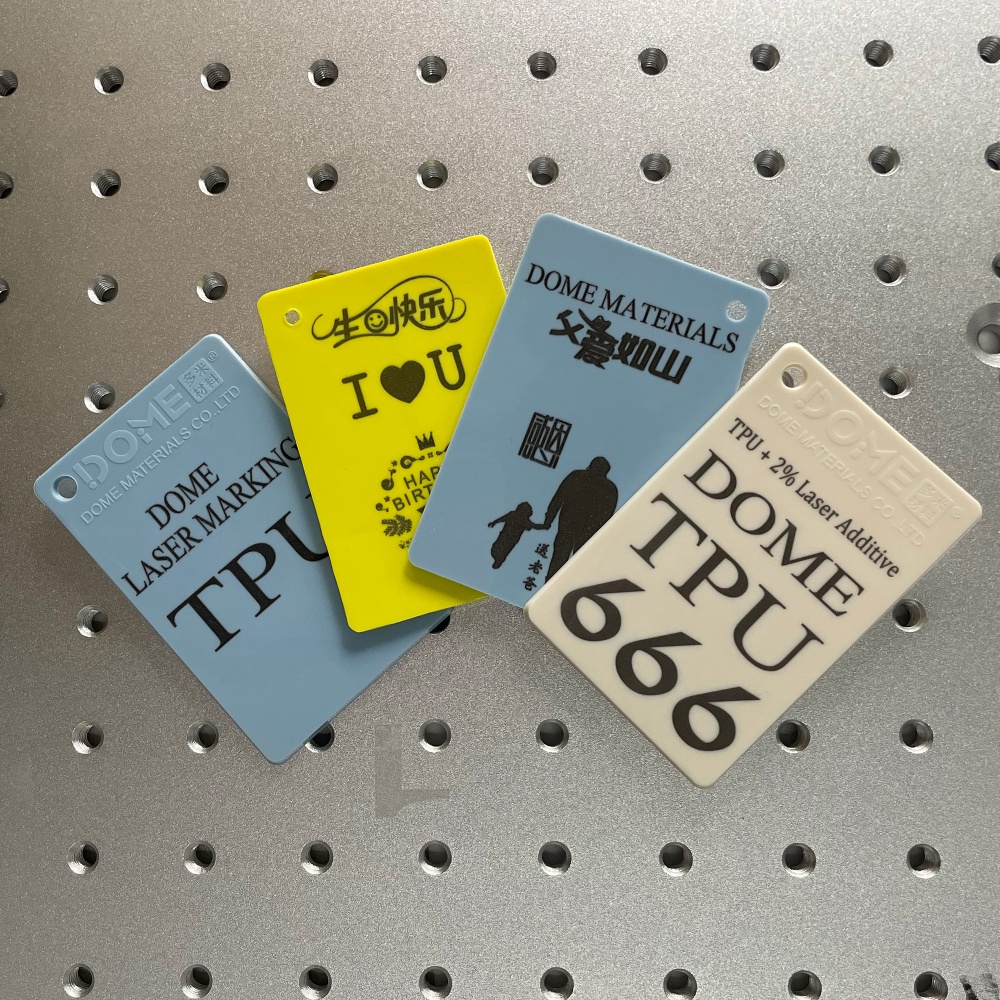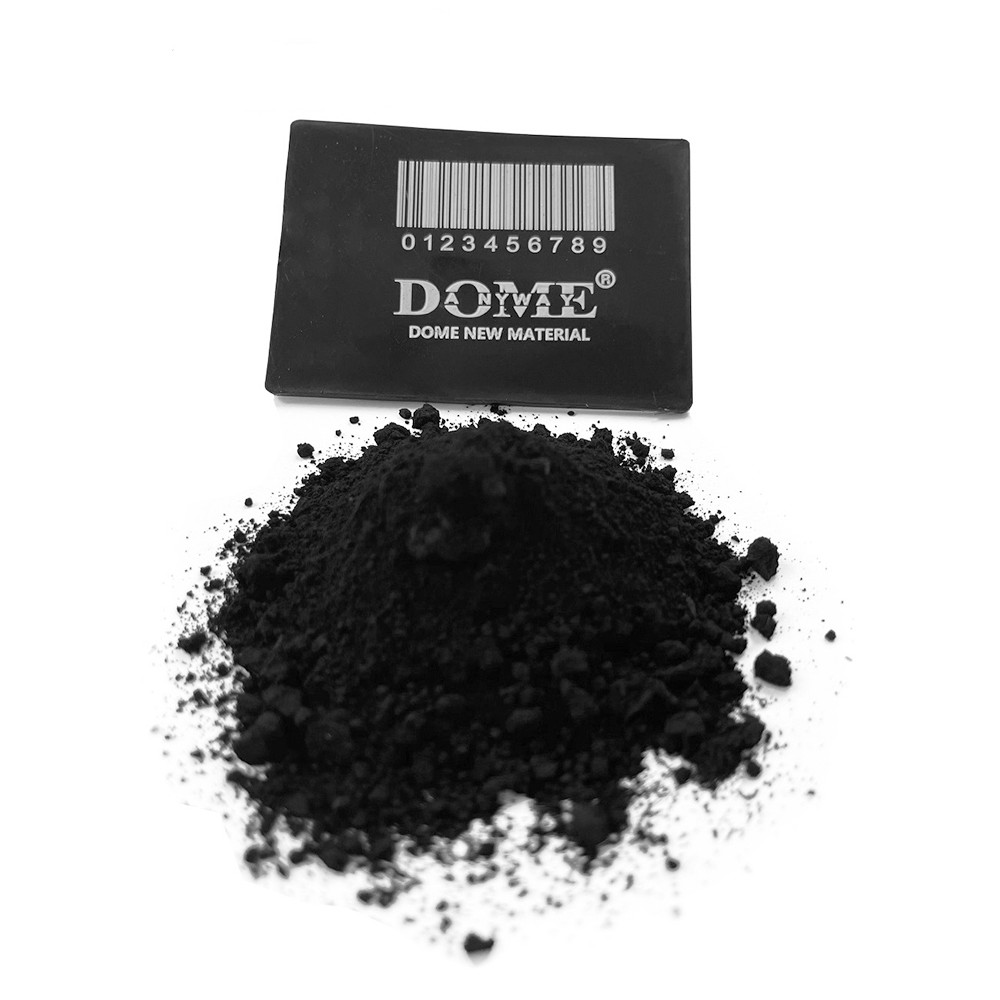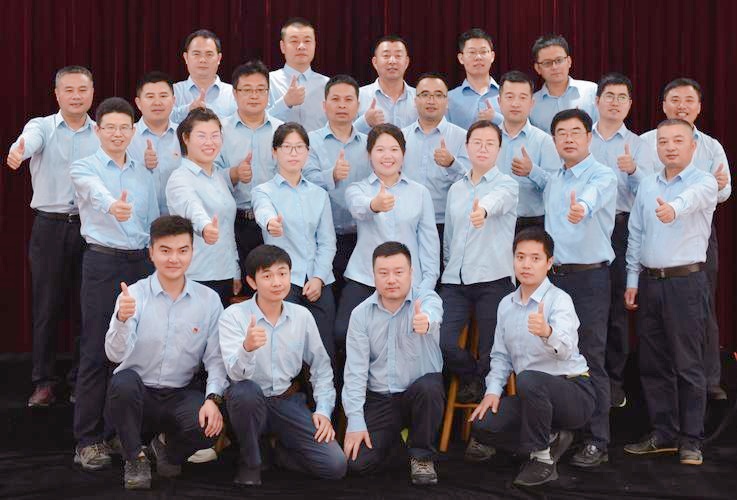In the plastic processing, packaging, and construction materials industries, HDPE (High-Density Polyethylene), LDPE (Low-Density Polyethylene), and LLDPE (Linear Low-Density Polyethylene) are the three most widely used polyethylene materials. While they all belong to the polyethylene family, their molecular structures and physical properties differ significantly, leading to distinct application scopes. More importantly, when paired with laser marking additives for product identification, their marking effects also vary noticeably. This article will comprehensively break down the core differences between the three and provide selection references based on practical application data of DOME Materials’ laser marking additives.
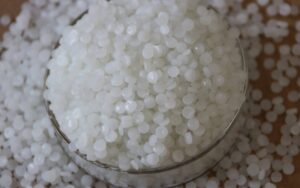

Core Differences Between HDPE, LDPE, and LLDPE: From Molecular Structure to Physical Properties
The performance differences of polyethylene essentially stem from their molecular chain structures—variations in branching degree and crystallinity directly determine key indicators such as material density, hardness, and toughness, which are the most critical distinguishing features of the three.
|
Property Dimension
|
HDPE (High-Density Polyethylene)
|
LDPE (Low-Density Polyethylene)
|
LLDPE (Linear Low-Density Polyethylene)
|
|
Molecular Structure
|
Extremely low branching degree (almost no short branches), dense molecular arrangement
|
High branching degree (abundant short branches), loose molecular arrangement
|
Linear molecular structure with a small number of long branches; arrangement between HDPE and LDPE
|
|
Crystallinity
|
High (70%-80%)
|
Low (40%-50%)
|
Medium (50%-60%)
|
|
Density (g/cm³)
|
0.941-0.965
|
0.910-0.925
|
0.915-0.925
|
|
Hardness/Rigidity
|
High; hardness close to rigid plastics, strong deformation resistance
|
Low; soft texture, easy to bend
|
Medium; better flexibility than HDPE, better rigidity than LDPE
|
|
Temperature Resistance
|
Good; continuous service temperature up to 100℃, high heat distortion temperature
|
Poor; continuous service temperature around 60-80℃, prone to thermal deformation
|
Medium; continuous service temperature around 80-90℃, excellent low-temperature resistance (maintains toughness at -50℃)
|
|
Chemical Resistance
|
Excellent; resistant to acids, alkalis, salts, and most organic solvents, not easily corroded
|
Good; slightly inferior to HDPE in chemical resistance, lower tolerance to strong solvents
|
Good; chemical resistance close to HDPE, stable against acids and alkalis
|
|
Processing Fluidity
|
Poor; high melt viscosity, requires higher processing temperature (180-220℃)
|
Good; high Melt Flow Rate (MFR), suitable for injection molding and film blowing (160-200℃)
|
Good; better fluidity than HDPE, lower than LDPE, suitable for film and pipe processing (170-210℃)
|
Application Comparison: Matching Industry Needs Based on Properties
The distinct physical properties of the three materials determine their application divisions in industries. Precise material selection ensures a balance between performance and cost:
1. HDPE: Scenarios Prioritizing High Rigidity and Temperature Resistance
With high crystallinity and strong hardness, HDPE is suitable for scenarios requiring structural strength and temperature resistance:
- Packaging Field: Food-grade HDPE for yogurt cups, sauce bottles (resistant to 100℃ sterilization temperature), and chemical drums (resistant to acid and alkali corrosion);
- Construction Field: HDPE water supply pipes, gas pipes (impact-resistant, with long-term water pressure resistance), and outdoor flooring (aging-resistant, deformation-resistant);
- Industrial Field: Automotive fuel tanks (resistant to fuel corrosion) and washing machine inner drums (resistant to detergents and high temperatures).
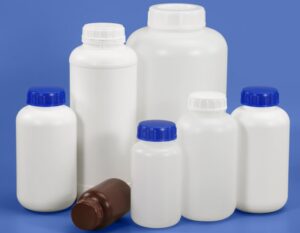
2. LDPE: Scenarios Prioritizing High Fluidity and Flexibility
LDPE has a soft texture and good processing fluidity, making it more suitable for thin-walled, easy-to-form, or flexible products:
- Packaging Field: Food cling film (soft, easy to stretch), plastic bags (high film-blowing efficiency), and cosmetic hoses (easy to squeeze, good sealing);
- Daily Necessities Field: Toys (soft, impact-resistant) and agricultural films (thin, easy to cover);
- Electronics Field: Wire and cable insulation layers (low dielectric constant, good flexibility).
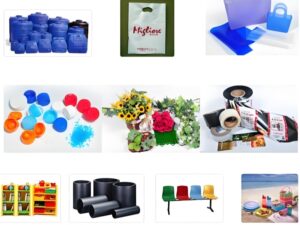
3. LLDPE: Scenarios Requiring Balanced Flexibility and Strength
LLDPE combines the flexibility of LDPE and the strength of HDPE, with outstanding low-temperature resistance and puncture resistance:
- Film Field: Stretch wrap film (high toughness, good self-adhesion, used for cargo packaging and fixation), agricultural films (low-temperature resistant, not easy to brittle in winter), and heavy-duty packaging films (puncture-resistant, suitable for packaging hardware and construction materials);
- Pipe Field: Underfloor heating pipes (low-temperature impact-resistant, adapting to temperature differences in floor heating) and sewage pipes (chemical corrosion-resistant, settlement-resistant);
- Modification Field: Blended with HDPE to improve toughness or with LDPE to enhance strength, used in manufacturing corrugated pipes and special-shaped parts.
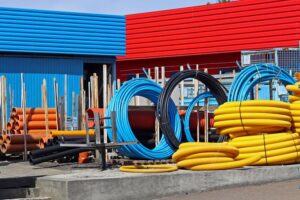
DOME Materials Laser Marking Additives: Comparative Testing of Marking Effects on Three Materials
In plastic product production, laser marking is a core process for achieving ink-free, highly wear-resistant identification. The compatibility of laser marking additives directly affects marking clarity and color stability. For HDPE, LDPE, and LLDPE, the test results of DOME Materials’ laser marking additive (Model: GM-GW032S / DM-GW0082S) show clear differences, with the core conclusions as follows:
1. HDPE: Best Black Marking Effect, Excellent Contrast and Clarity
When 1.5% concentration of DOME-LM01 additive was added to HDPE substrates and tested with a 1064nm fiber laser marking machine (power: 20W, speed: 500mm/s):
- Marking Effect: The text appears pure black without mottling, with clear edges and no jaggedness. The contrast ratio (black-on-white/white-on-black) can reach over 1:8, meeting the high visibility requirements for food packaging and industrial components;
- Reason Analysis: HDPE has high crystallinity and dense molecular arrangement, allowing laser energy to act precisely on additive particles to trigger uniform carbonization. Additionally, the material itself has no easily decomposable short branches, preventing yellow by-products and resulting in pure black color.
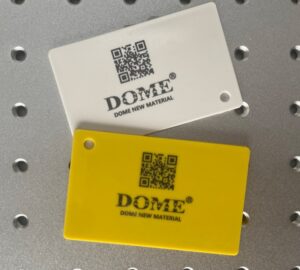
2. LDPE: Second-Best Black Marking Effect, Qualified Clarity, Slightly Inferior Blackness
With the same concentration of Dome Materilas Laser marking additive model DM-GW0032S / DM-GW0082S added to LDPE substrates and tested under the same laser parameters:
- Marking Effect: The text appears dark gray to near-black, with good clarity (no blurred edges) and a contrast ratio of approximately 1:6, meeting the needs of daily packaging identification (e.g., plastic bag batch numbers, production dates);
- Reason Analysis: LDPE has a high branching degree and large molecular gaps, causing partial laser energy to be scattered and absorbed. The carbonization of additive particles is slightly weaker than in HDPE, leading to lower blackness. However, the soft material prevents cracking after marking, making it suitable for flexible product identification.
3. LLDPE: Slightly Yellowish Marking, Independent of Additives, a Material-Specific Trait
When DM-GW0032S / DM-GW0082S additive was added to LLDPE substrates and tested under the same conditions:
- Marking Effect: The text appears gray-black with a slight yellowish tint, normal clarity, but slightly inferior color uniformity compared to the other two materials;
- Key Note: This yellowish tint is unrelated to DOME Materials’ laser marking additives. The core reason is that LLDPE’s molecular structure contains a small number of long branches, which are prone to slight oxidative decomposition under high laser temperatures, producing trace yellow substances (not additive discoloration). To improve this, laser parameters can be adjusted (e.g., reducing power, increasing speed) to minimize material decomposition, or a dedicated additive model for LLDPE (such as DOMEMaterials-LM03) can be selected.
Selection Summary: Matching Materials and Additives Based on Needs
- For High Blackness and High Clarity Identification (e.g., food packaging, medical components): Prioritize HDPE + DOME Materials-DM-GW0032S / DM-GW0082S( with dosage 1-3%) It delivers the best marking effect, and its temperature and chemical resistance are suitable for most harsh scenarios;
- For Flexible Substrates + Basic Identification (e.g., plastic bags, toys): Choose LDPE + DOME Materials Laser additive DM-GW0032S / DM-GW0082S( with a dosage 2-4%) It meets clarity requirements while balancing processing fluidity and cost;
- For Low-Temperature Resistance, Puncture Resistance + Identification (e.g., agricultural films, stretch wrap films): Select LLDPE. It is recommended to match it with DOME Materials-Laser additive DM-GW0032S / DM-GW0082S( with a dosage 3-5%) dedicated additive or adjust laser parameters to reduce yellowish tint.
As a company specializing in laser marking additives and masterbatches, DOME Materials can provide customized additive solutions based on the characteristics of different polyethylene materials. It implements full-process control from raw materials to finished products to ensure stable marking effects across batches. If you have specific marking needs for materials, please feel free to contact us for free samples and testing services!

